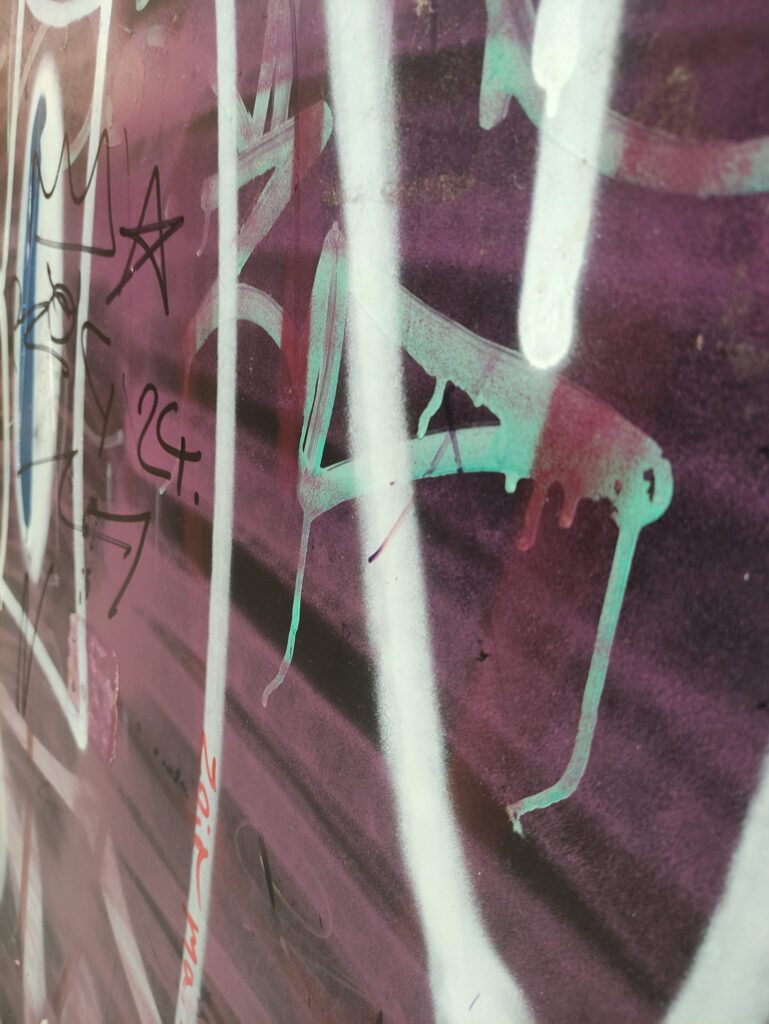Dripping Paint Graffiti: The Art of Fluid Expression
Dripping paint graffiti, a distinctive style within the world of street art, is celebrated for its raw energy and dynamic visual impact. Characterized by paint that flows and drips down the surface, this technique adds an element of movement and spontaneity, capturing the essence of graffiti’s rebellious spirit.
Origins of Dripping Paint Graffiti: The dripping paint style emerged alongside the rise of graffiti in the 1960s and 1970s. Early graffiti artists in New York City experimented with different spray paint techniques to make their tags and pieces stand out. Overloading spray cans to create drips became a popular method, as it conveyed a sense of urgency and defiance.
Technique and Aesthetics: Creating dripping paint graffiti involves intentionally applying excess paint so that it drips down the surface. This technique can be achieved using spray paint, brushes, or even paint rollers. The resulting drips add texture and depth to the artwork, often enhancing its visual impact. The fluid lines and unpredictable patterns of drips evoke a sense of motion, giving the piece a dynamic and alive quality.
Cultural Significance: Dripping paint graffiti is more than a stylistic choice; it is a form of expression that resonates with the core values of street art. The drips symbolize the artist’s unrestrained creativity and the transient nature of graffiti itself. They reflect the raw and unpolished aesthetic of the streets, challenging the boundaries of conventional art forms.
Iconic Artists and Influences: Numerous graffiti artists have embraced the dripping paint style, each bringing their unique approach to the technique. Jean-Michel Basquiat, a pioneering figure in the art world, often incorporated drips into his works, blending graffiti with fine art. Contemporary street artists like Tilt and Mr. Brainwash have also popularized the use of drips, creating bold and vibrant pieces that captivate audiences.
Public Perception and Legal Issues: As with other forms of graffiti, dripping paint graffiti exists in a gray area between art and vandalism. While some view it as a form of urban blight, others recognize its artistic value and cultural significance. In recent years, more cities have started to embrace graffiti as a legitimate art form, offering legal spaces for artists to create and showcase their work.
The Future of Dripping Paint Graffiti: The dripping paint style continues to evolve, influenced by new techniques and digital advancements. Artists are experimenting with different mediums and surfaces, pushing the boundaries of what dripping paint graffiti can achieve. Social media platforms have also played a crucial role in promoting this art form, allowing artists to reach a global audience and inspire new generations of street artists.
Conclusion: Dripping paint graffiti is a powerful testament to the creativity and resilience of street artists. Its fluid and dynamic nature captures the spirit of rebellion and innovation that defines graffiti culture. As this art form continues to evolve, it will undoubtedly leave an indelible mark on the urban landscape and the world of contemporary art.
